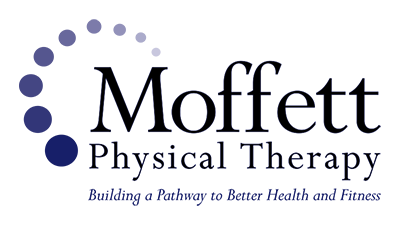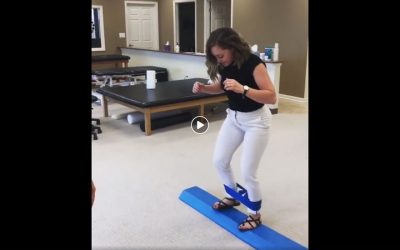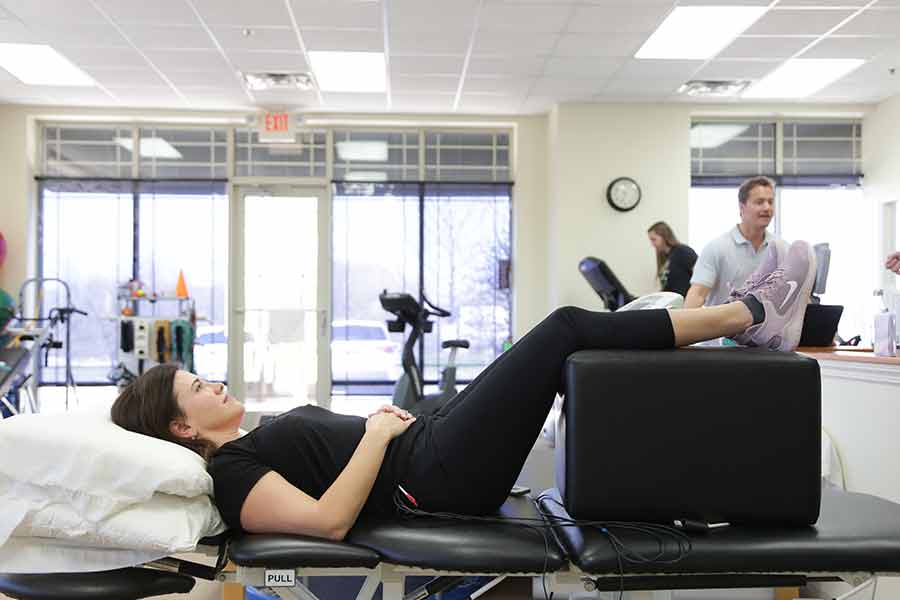
Spine / Neck
Headaches and Migraines
Headaches and migraines can be a result of a variety of conditions. Physical therapy can treat some of the precipitating factors including, but not limited to: muscular strain and spasms, posture malalignments, poor body mechanics, inefficient workstation ergonomics, limited neck and trunk mobility, muscular weakness, and imbalances.
Herniated Disc
Discs are found between the vertebrae in the spine. These discs are designed to be the body’s shock absorbers, while also allowing for spinal mobility. Over time, or with trauma, the discs may deteriorate and progress to either a bulge or herniation. Bulges and herniations can result in low back, buttocks and/or leg pain, weakness and other dysfunctions. Physical therapy can assist with the reduction of pain and symptoms associated with disc herniations. Skilled therapeutic treatments may consist of range of motion exercises, stretching, core stabilization, strengthening exercises, manual therapy, modalities, back mechanics, ergonomics and posture education. Patients are also provided with a home exercise program, which is customized to the individual’s needs.
Chondromalacia
Chondromalacia patellae is a pathology that effects the kneecap (patella). It is a softening and degeneration of the cartilage under the patella. This condition may also be referred to as patellofemoral syndrome. A variety of reasons could cause the cartilage to wear down including poor patellar tracking, muscular imbalance, and over use. Typically, pain occurs behind the kneecap, especially with knee bending and stressful activities such as squatting and ascending and descending stairs. Physical therapy can assist with normalizing muscular balance, decreasing pain, and return to function.
Laminectomy
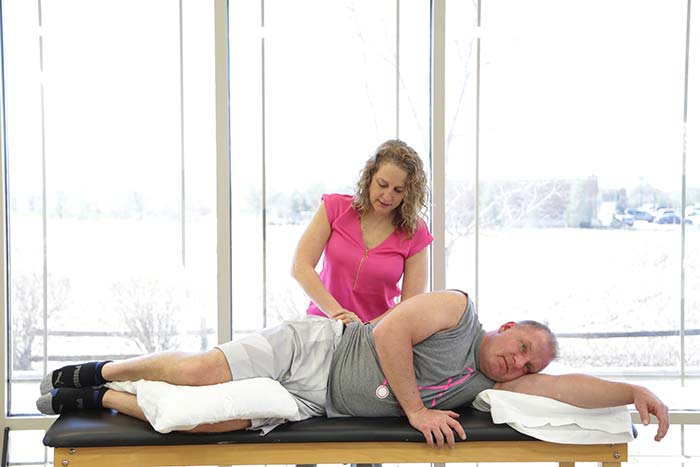
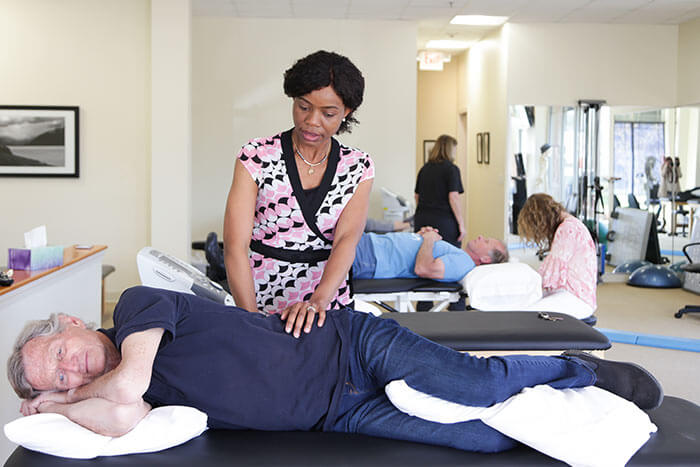
Lower Back Pain
It has been found that 80% of Americans have experienced low back pain at some point in their lifetime. If you have had back pain, you have an increased risk of it occurring again. There are many causes of low back pain, and many can be treated by skilled physical therapy interventions. Physical therapy can also reduce the risk of a reoccurrence of low back pain.
McKenzie Treatment
McKenzie treatment is one form of physical therapy intervention that can reduce neck, mid back, and low back pain. This treatment consists of repetitive movements to assist with the reduction of radicular symptoms and improve spinal mobility. More specific information can be obtained from the McKenzie Institute.
Sacroiliac Dysfunction
Sacroiliac dysfunction is a malalignment of the sacroiliac joint (SI joint). The SI joint is located where the bottom of the spine connects with the pelvis. This condition can cause low back and pelvic region discomfort, and it is often a missed diagnosis. This condition is often confused with other low back and hip issues which present with similar symptoms. Physical therapy can assist with pelvic realignment, and it can provide stabilization exercises to maintain better positioning. By improving SI alignment, pressure and tension is relieved off the surrounding musculature, ligaments, fascia, and nerves, thus decreasing pain.
Sciatica
Sciatica is a form of buttock pain that can radiate into an individual’s leg. This pain occurs when the sciatic nerve becomes irritated as a result of variety of reasons including disc herniation and disc bulge. Similar conditions may also produce ‘sciatic like’ symptoms which also can be rehabilitated with physical therapy services. These symptoms can be created from muscular imbalances, and spasms.
A through physical therapy examination will guide a treatment program specific for an individual’s needs. Treatment options include spinal range of motion exercises, stretching, core stabilization, strengthening exercises, manual therapy, modalities, back mechanics, ergonomic and posture education. Patients are also provided with a home exercise program, which is customized to the individual’s needs.
Spinal Fusion
Spinal fusion is a surgical procedure that is utilized to stabilize vertebrae. Screws and rods are placed on to the spine in order to provide stability and allow a bony union (fusion) to occur. After this surgery, physical therapy is indicated to assist with a progression for a return to normal daily activities. Physical therapy treatment may consist of range of motion exercises, stretching, core stabilization, strengthening exercises, manual therapy, modalities, back mechanics, ergonomic and posture education. Patients are also provided with an individualized home exercise program.
Whiplash
Whiplash can occur from motor vehicle accidents and other traumatic events. It is a soft tissue injury to the neck musculature and support structures. This injury may also be called a neck sprain or strain. The mechanism of injury is most commonly a sudden backward movement of the neck followed by the neck rebounding forward in a rear-end accident. In this situation, the neck has been moved beyond its normal range of motion. In severe cases, other trauma may have occurred including: disc or herniation, nerve impingement, fracture, intervertebral joint damage along with muscular trauma.
Complaints of neck tightness and stiffness are the most prominent with this condition. Muscular spasming occurs to ‘splint’ the neck and upper back to avoid further injury. Physical therapy can assist with the reduction of pain and symptoms associated with whiplash. Skilled therapeutic treatments may consist of range of motion exercises, stretching, strengthening and stabilization exercises, manual therapy, modalities, back mechanics, ergonomics and posture education. Patients are also provided with an individualized home exercise program.

Related Blog Posts
How Physical Therapy Can Help Long Covid-19
What is Long Covid-19 Roughly 385 million cases of Covid-19 have been reported globally since the start of the pandemic 2 years ago, and about 25% of people who contracted Covid-19 have lingering symptoms that last anywhere from 1 to 12 months after initially...
Hip pain exercise
Improve Hip Strength, Balance, and Core
https://www.facebook.com/MoffettPT/videos/1110766505728010/
Contact us today to get started.
Hours
Monday - Thursday 7:00 am - 8:00 pm
Friday 7:00 am - 3:00 pm
Closed Saturday and Sunday
(847) 659-1000
